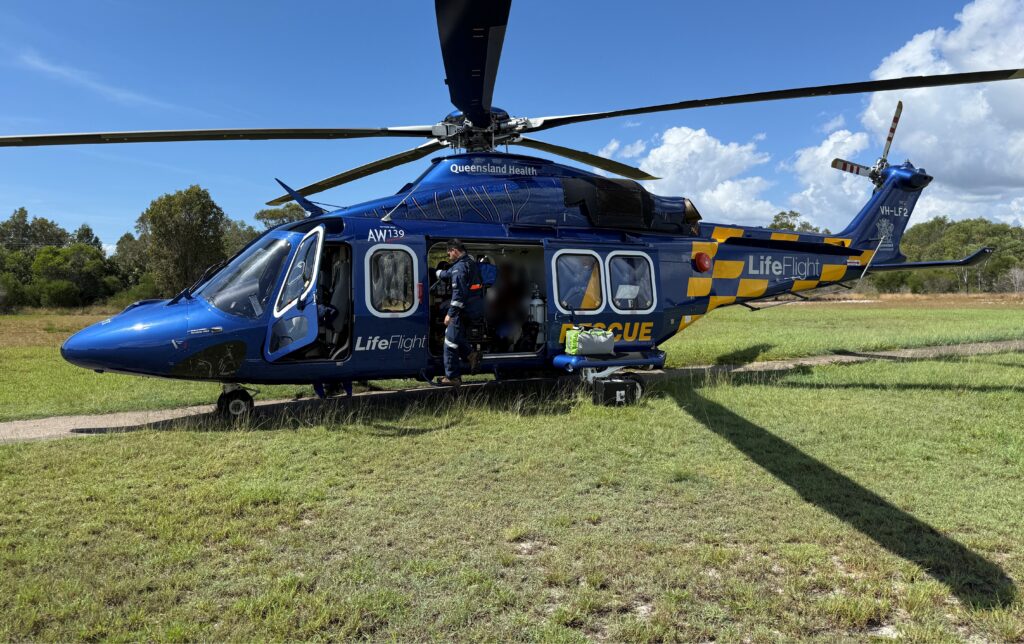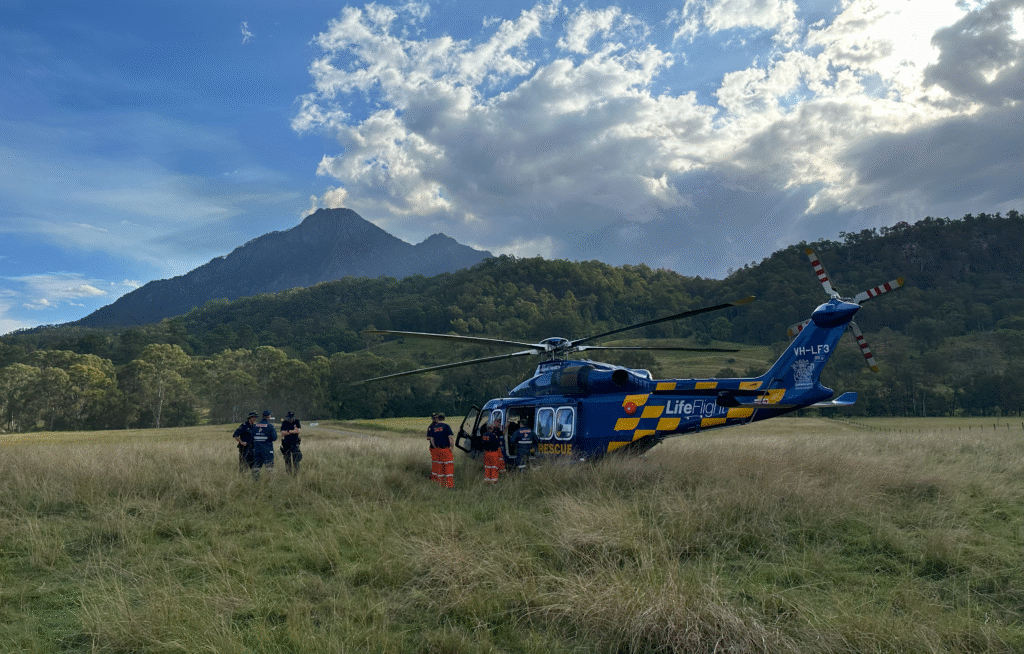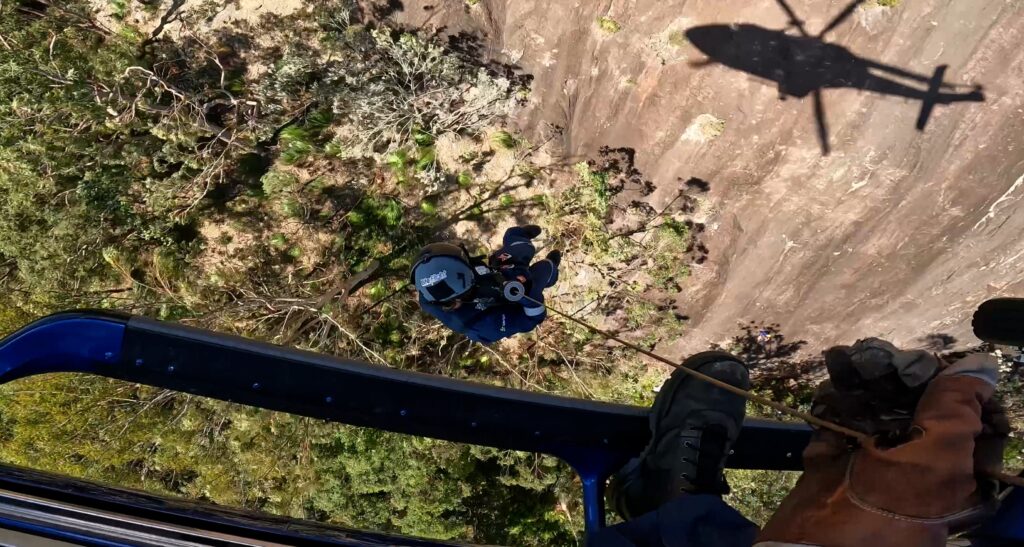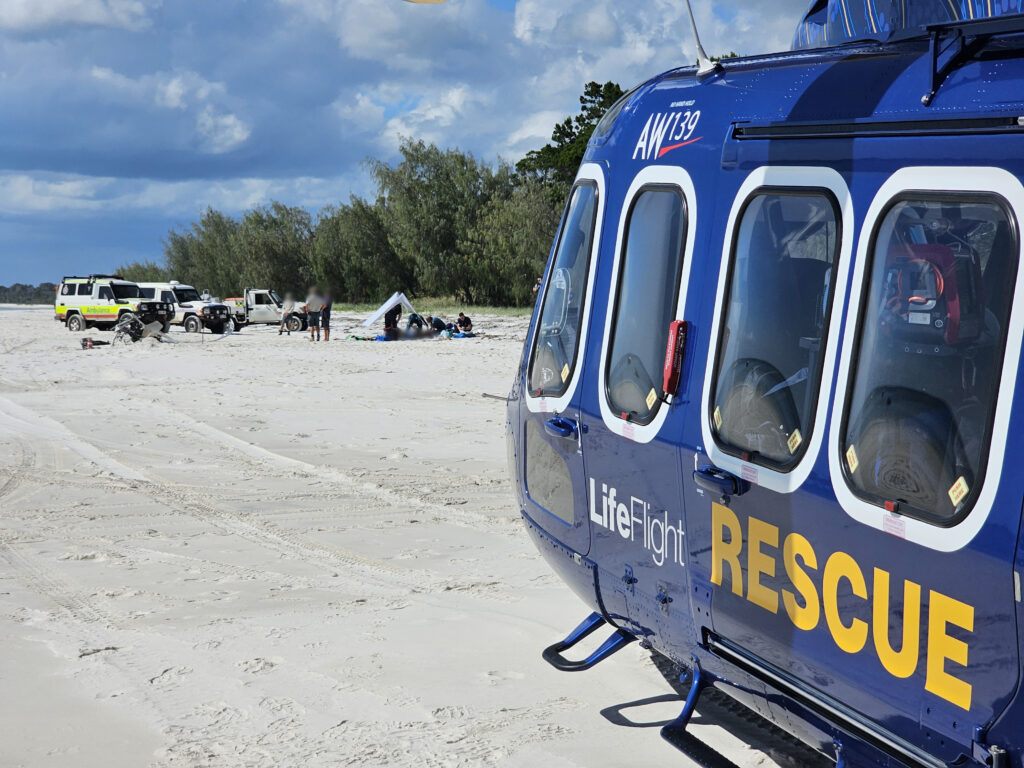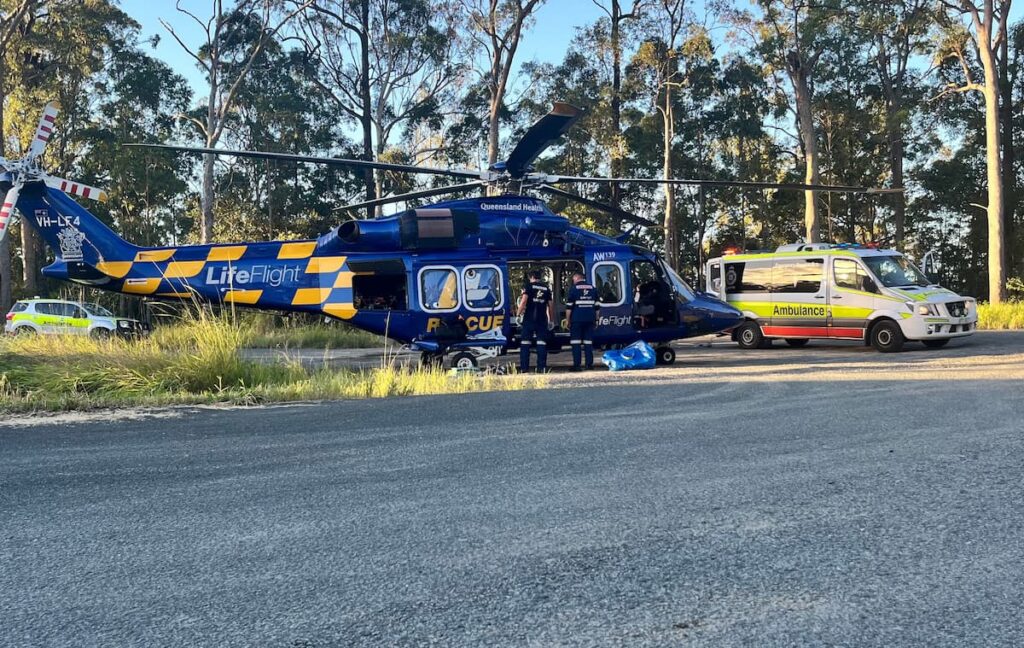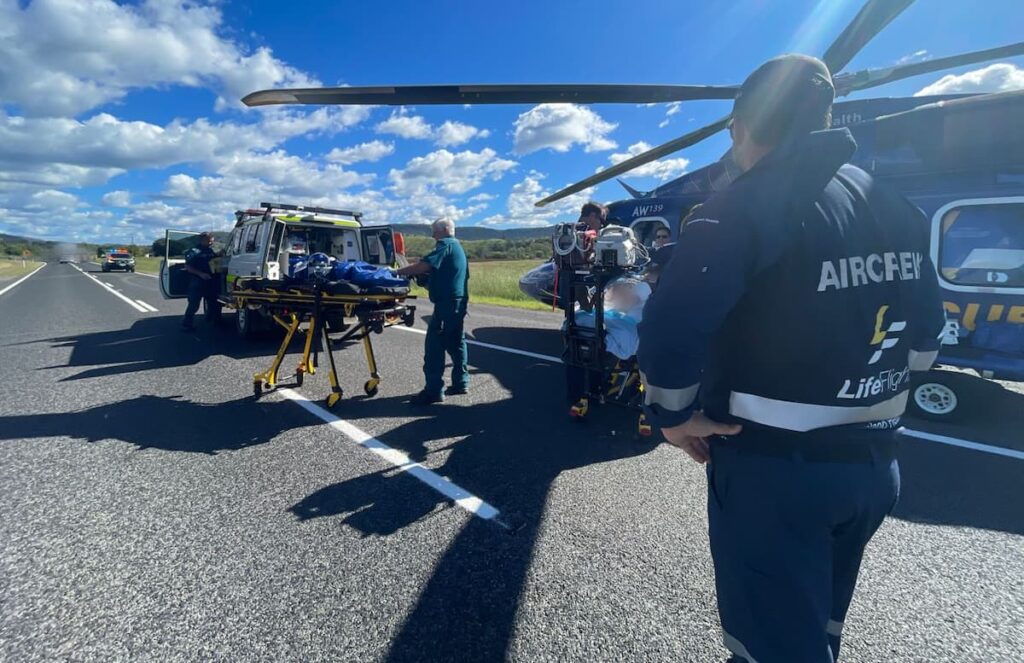Key Stats Sunshine Coast: FY24
- 600 people helped (up 19% on FY23)
- 967.5 flight hours (up 24% on FY23)
- 8,177 people helped across the LifeFlight network (up 11.2% on FY23)
The Sunshine Coast based LifeFlight aeromedical crew helped 600 people in FY24 – representing a 19 per cent increase on the previous year.
The crew notched more than 967 hours in the air across 628 missions and attended a wide range of incidents, ranging from plane crashes through to abseiling and swimming incidents.
It contributed to an overall record 8,177 people helped by LifeFlight in FY24 – more than 11 per cent higher than the previous year.
LifeFlight’s fleet of helicopters, air ambulance jets and specially trained medical teams, including LifeFlight critical care doctors, flight nurses and Queensland Ambulance Service (QAS) paramedics, helped patients with a range of illnesses and injuries.
In November, the crew helped two men floating in the ocean off the Sunshine Coast after their light plane experienced engine difficulties and plunged into the sea.
The LifeFlight helicopter rescue crew reached the scene within minutes of the crash to winch the rescue basket down and bring the men up one at a time, before they were flown to Sunshine Coast University Hospital.
In March the crew airlifted a boy to Queensland Children’s Hospital after he sustained a stomach laceration while swimming off an island in the Moreton Bay region.
That same month, the Sunshine Coast crew was called out to rescue a man in his 70s who had fallen 10 metres down a steep cliff face while abseiling in the Gympie region.
The crew winched a Queensland Ambulance Service (QAS) flight paramedic down to the cliff face where the patient was stabilised, secured into a harness, and winched back safely to the helicopter whereupon he was flown to Sunshine Coast University Hospital in a stable condition.
They also attended a number of incidents at local motocross parks where riders had sustained injuries after crashing their motorcycles.
Top 4 aeromedical missions* FY24:
- MVAs –100
- Cardiac – 71
- SAR – 11
- Animal-related – 8
*By people helped
LifeFlight Chief Operating Officer Lee Schofield, said the Sunshine Coast crew demonstrated a high degree of aeromedical excellence during the past financial year.
“The missions run the gamut of emergency care and rescue operations and show how our crews face vastly different situations with fortitude and strength,” he said.
“It demonstrates how crucial LifeFlight’s operations are in helping people who need emergency medical assistance, often in remote locations far from major cities and hospitals.
“We couldn’t be prouder of how all our critical care doctors, paramedics and air crew have conducted themselves this past year often in very trying circumstances. They rescue people across regional and remote Queensland and for that we owe them a debt of gratitude.”
LifeFlight Medical Director Dr Jeff Hooper, said the organisation continued to lead the way in the aeromedical sector with world-leading standards of care.
“This is often while our crews deal with extremely challenging conditions, whether that is stabilising a patient mid-air, winching down a paramedic to the side of a cliff face, or rescuing people stranded in the ocean,” said Dr Hooper.
“Our teams have the specialist emergency medicine skills required to provide the best available treatment to people, who are often in remote locations, while battling the elements.
“Our critical care doctors, nurses and paramedics are a mobile intensive care team and their rapid aeromedical intervention often mean the difference between life and death. That’s why the work is so important to hundreds of thousands of people living in regional Queensland communities.”
Construction is underway on a new LifeFlight base at the Sunshine Coast Airport Aerospace Precinct following $18.6 million in funding and a 20-year ground lease from the Queensland Government. A new Visitor Centre will also help directly engage the community in LifeFlight’s aeromedical work.
Since taking to the skies 45 years ago LifeFlight has helped close to 90,000 people.
LifeFlight rescue helicopters contribute to the Queensland Emergency Helicopter Network via a fully costed agreement with the Queensland Government which came into effect April 2024.





